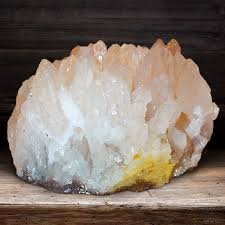
Baryta carbonica
Latin name: Barium carbonicum
Short name: Bar-c
Common name: Baryta carbonica | Barium carbonate | Carbonate of Barium | Bar. carb. | Bar-c.
Primary miasm: Sycotic Secondary miasm(s): Psoric, Tubercular
Kingdom: Minerals
Family: Inorganic salt
- Symptomatology
- Remedy Information
- Differentiation & Application
A chemical compound, BaCO₃, Barium carbonate occurs as a white crystalline solid. It is sparingly soluble in water and toxic in crude form.
In industry, used in ceramics, rat poison, and chemical manufacturing; extremely toxic in crude form. Not used in conventional medicine.
First proved by Samuel Hahnemann and described in Materia Medica Pura. Expanded by Boericke, Kent, and Clarke.
- Mind: arrested development, shyness, fear of people, senility
- Glands: chronic enlargement, especially tonsils, cervical nodes
- Cardiovascular system: arteriosclerosis, aneurysms
- Immune system: weakness, frequent colds, infections
- Growth and development: dwarfishness, delayed milestones
- Elderly: senility, memory loss, slow comprehensiona
- Warmth
- Being alone (for shy children)
- Routine, predictability
- Dry weather
- Gentle encouragement
- Lying down (especially for fatigue and weakness)
- Cold, damp air, especially from exposure to feet or head
- Mental effort
- Being laughed at, or exposed publicly
- Anticipation, performance
- Suppressed eruptions
- Coition, which may cause fatigue
- Getting wet, especially the feet or head
- Calcarea carbonica – Also delayed development and timidity, but Calc. is plump, sweaty, and more active
- Silicea – Similar slow development, but more chilly, obstinate, and has better intellectual ability
- Lycopodium – Intellectual but insecure; seeks power, Bar-c. avoids responsibility entirely
- Thuja – Warts and suppressed eruptions, but more secretive and sycotic; Bar-c. is shy, undeveloped
- Phosphorus – Sensitive, outgoing, emotional; Bar-c. is shy, closed, and mentally dull
- Complementary: Sil., Calc., Nat-m.
- Antidotes: Camph., Nux-v.
- Inimical: Iod., Merc.
- Follows well: Calc., Lyc., Tub.
- Precedes well: Psor., Sulph.
Baryta carbonica is the archetype of incomplete development—the soul that remains a child long into life, or the mind that withers prematurely. It speaks of fragility, fear, and social withdrawal, often stemming from early neglect, mockery, or a fragile constitution. It covers both ends of life: backward children who cannot keep pace, and elderly individuals who descend into childishness, mental decay, and vascular degeneration. Its deepest need is for protection, structure, and gentle support, never force.
- Use in developmentally delayed children—slow to talk, walk, or grow
- Indispensable in recurrent tonsillitis with chronic glandular swelling
- Prescribe in senile dementia, arteriosclerosis, or mental decline in elderly
- Also useful for shy children, especially with fear of strangers or ridicule
- In elderly, think of Bar-c. for fatigue, hypertension, and vascular changes
- Chronic sinus infections or catarrh with deafness suggest Bar-c.
- Begin with low to medium potencies (6C–30C); chronic cases may need 200C
Mind
- Fear, people of
- Shyness in children
- Delusions, being laughed at
- Slowness, comprehension
- Childish behaviour in elderly
- Averse to strangers
Throat / Glands
- Tonsils, enlarged
- Cervical glands, indurated
- Throat, recurrent infections
- Suppuration, glands
Head / Development
- Head large, body small
- Development, arrested
- Learning delayed
Generalities
- Children, backward
- Senility, premature
- Aneurysm
- Arteriosclerosis
- Cold, damp, agg.
- Weakness, general
Skin
- Warts
- Acne
- Eruptions, slow to heal
Samuel Hahnemann – Materia Medica Pura: Primary proving data, foundational description
James Tyler Kent – Lectures on Homoeopathic Materia Medica: Emphasis on mental immaturity, glandular swellings
William Boericke – Pocket Manual of Homoeopathic Materia Medica: Practical indications for children and aged
John Henry Clarke – Dictionary of Practical Materia Medica: Expanded descriptions of degenerative and glandular symptoms
C. Hering – Guiding Symptoms of Our Materia Medica: Supported chronic and constitutional use
Allen’s Encyclopaedia: Supplemented details on miasmatic and developmental dimensions
